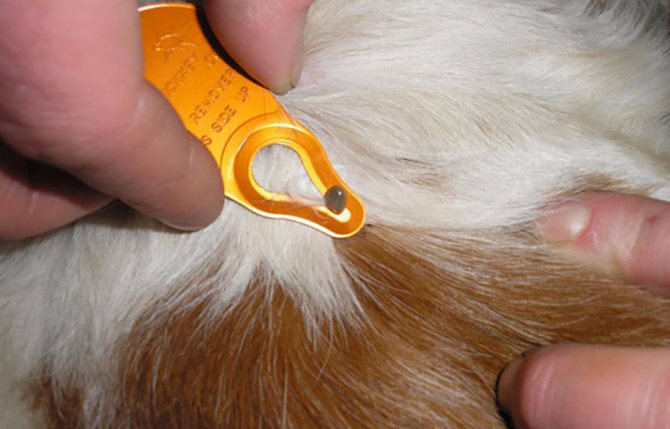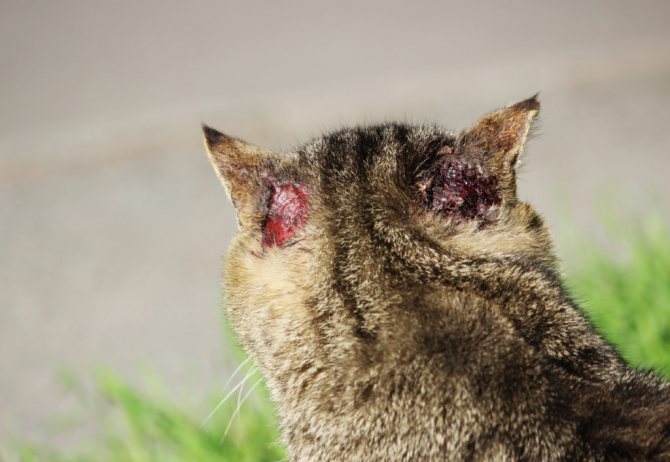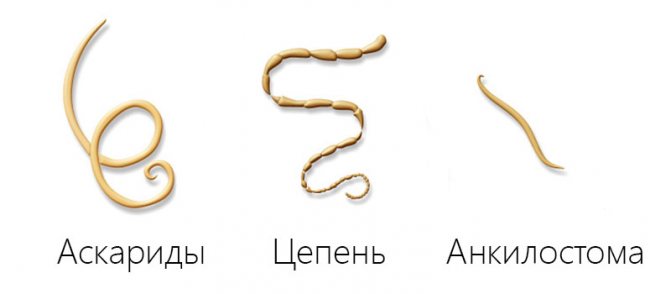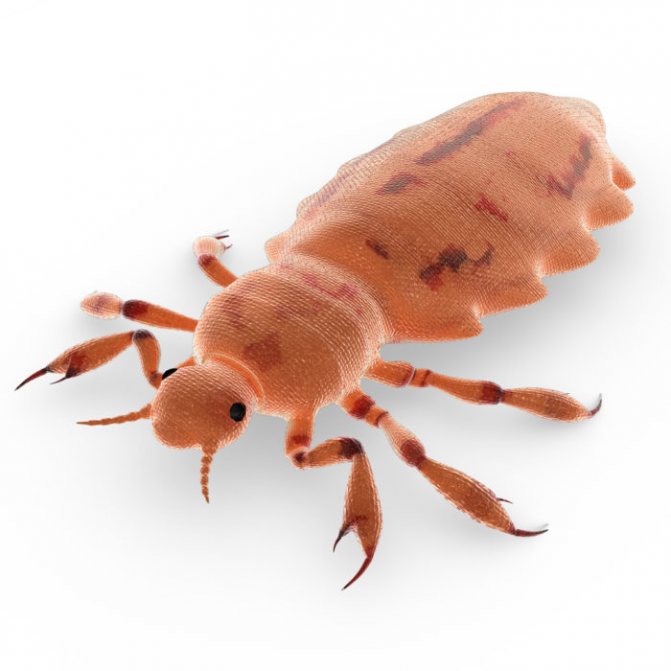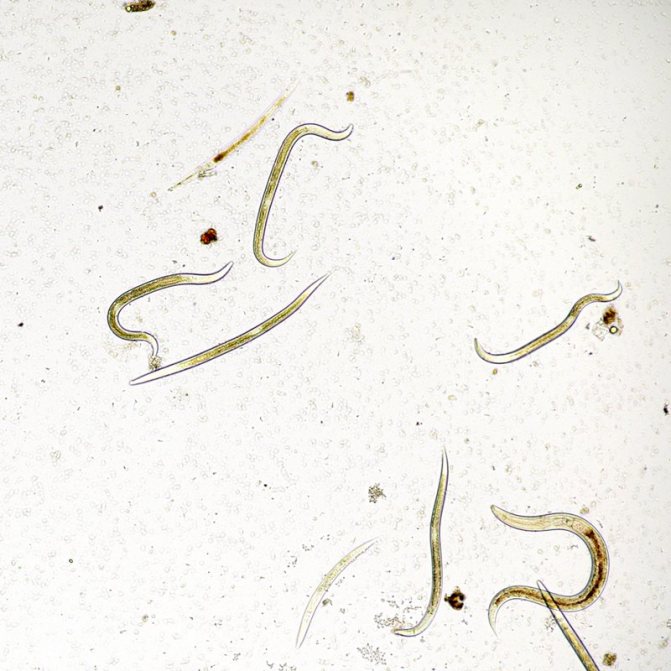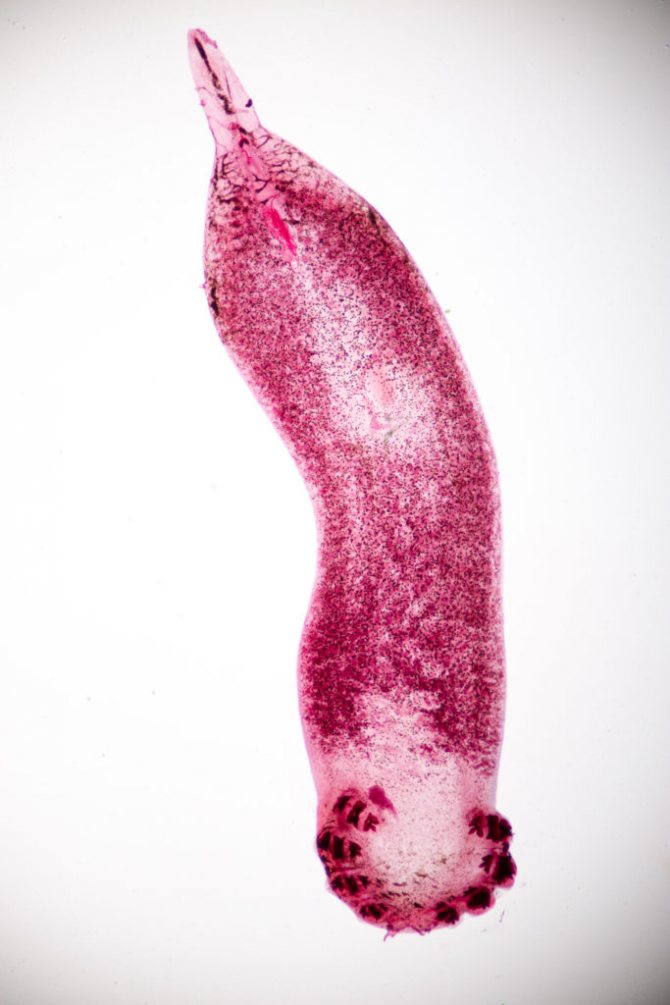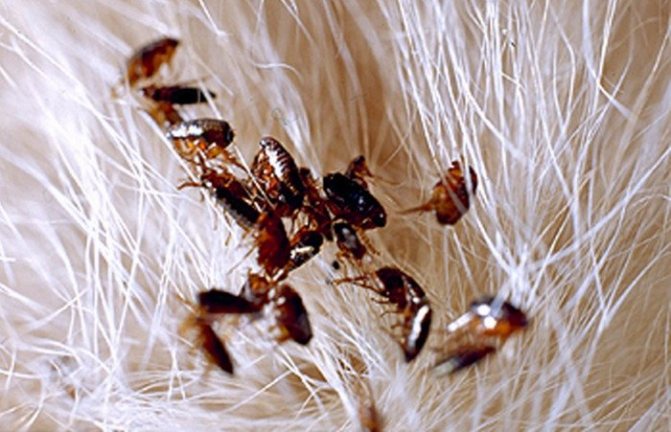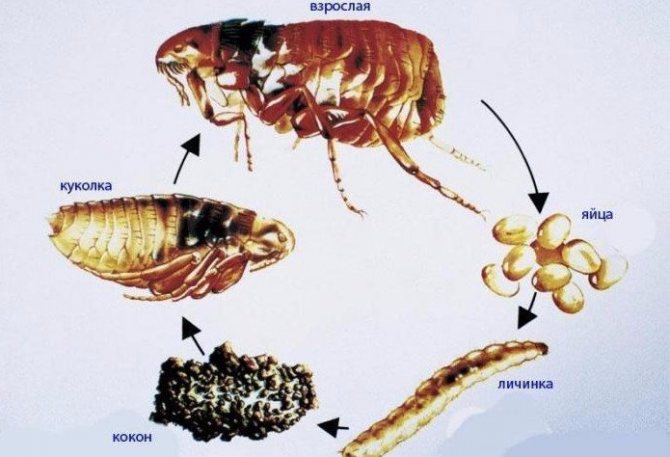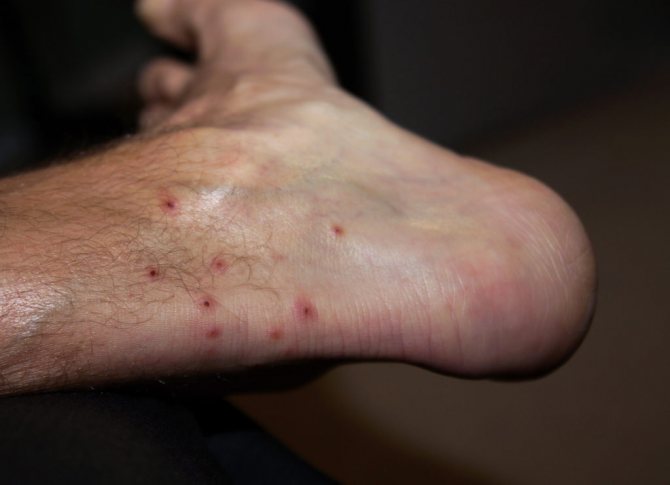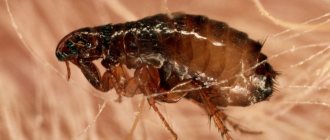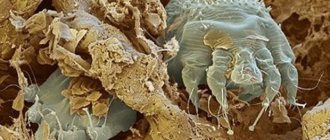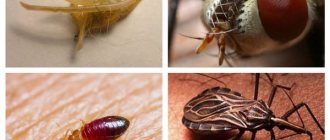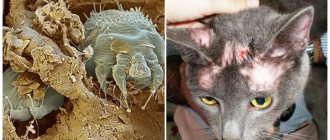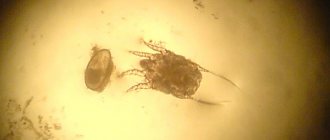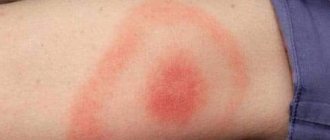What are and how to treat external parasites in cats
Parasites on cats are, first of all, blood-sucking insects that can be found on stray animals and against which pets are not immune. Today we are interested in those of them that parasitize on the skin and hair of the animal, and the removal of which must be carefully monitored.
Lice infestation in cats is called trichodectosis... The symptoms of a lice and flea infestation are identical.
Description of parasites
Lice in nature are represented by many species. A human parasite won't live on a cat, a feline parasite won't live on a dog, a canine parasite won't live on a cat. Simply put, lice in cats are not transmitted to humans.
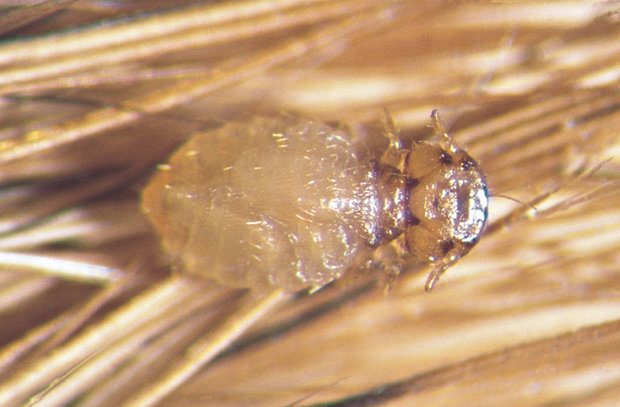
Vlasoids are small long dense insects of light yellow color with a head resembling a triangle. The jaw is shaped like a deep indentation, ideal for grasping and nibbling a hair. They spend most of their lives attached to the hair at the root, but often descend to eat the feline epithelium.
Lice eggs are called nits, and they can also be used to diagnose skin parasitic infections in a cat, since they are clearly visible. They are massively attached with a sticky secret to the hair, but not for long.
A young louse appears after a few days, it is smaller in size than the mother, but no less harmful. The cycle repeats itself, and if the parasites are not destroyed, then ad infinitum, until the animal itself dies.
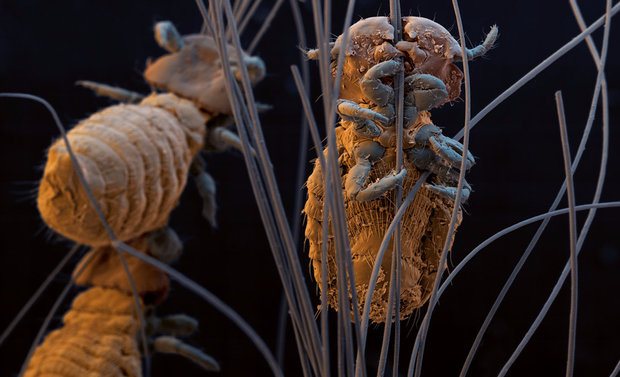

Causes and symptoms
Lice appear after contact of a domestic cat with infected animals. In nature, for example, on soil, these parasites do not live, and if they get there, they die due to inappropriate conditions.
With a serious lice infestation, the following are observed:
- intolerable itching, the animal itches, scratches the skin;
- from areas of the skin of multiple accumulations of lice, hairs massively fall out, up to baldness. The place where the cat sleeps is abundantly strewn with individual hairs, as in natural molting;
- excrement of parasites is clearly visible if the color of the animal is light. They look like black dots, and an inexperienced owner takes them for dirt;
- in severe cases, dermatitis develops.
Skin parasites are also dangerous because they carry the eggs of worms, the infection with which is almost guaranteed. Favorite places that insects occupy are the neck, head, base of the tail.
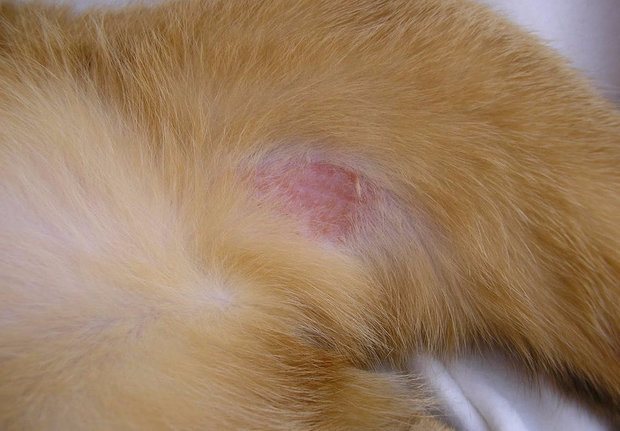

Only hairless cats are free from such infection. When diagnosed, live lice are found on the animal almost immediately, during the first visual examination. As a rule, it does not come to a serious defeat for pets from conscientious owners, measures are taken on time. The most severe consequence of a lice infestation in cats is complete baldness.
Disposal methods
Trichodectosis in cats is treated with the same drugs as fleas, usually in combination. That is why the symptoms of lice go past the attention of the owners, because, by destroying fleas, they also get rid of lice at the same time.
Often, owners don't even know that cats can also have these parasites. Nobody has heard the expression "lousy cat", but everyone knows the colloquial "flea cat".
Veterinary pharmacies offer flea killers that are also used to remove cat lice. It:


- drops Hartz, Frontline, Bayer, Bars. They are applied to the skin of the animal at the back of the head and along the spine.Parasites die, and new ones do not appear for several weeks;
- sprays "Blohnet", Hartz, Frontline. The wool is processed all over the body, the animal is not bathed after the procedure for several days;
- shampoos "Lugovoy", "Phytoelita", Rolf Club... They are used both for removing existing parasites and for prophylaxis;
- flea collars Kiltix, Hartz, Barsik. They do not require additional treatment with the above drugs, they are also effective against fleas, and are constant protection with high efficiency.
Treatment for parasites is carried out twice with an interval of two weeks, since nits often do not respond to poisons. Only live individuals can be poisoned, and the time for hatching of young lice is just these two weeks. In practice, parasites are first removed with drops, sprays or shampoos, and then a collar is put on the treated animal.


It should be remembered that animals are also susceptible to allergies. Any medicine, including against blood-sucking insects, is a potential allergen. In order not to harm the animal, you should carefully study the annotation to the drug, and after use, carefully observe the animal. Even with the correct use of the medication, reactions typical of allergies can appear.
Are gadfly larvae dangerous for pets?
We found out that humans and cattle can suffer from these parasites. What about our pets? Especially dogs and cats that periodically walk on the street. There is a certain risk.
At the same time, the infection of dogs and cats occurs not only through contact with intermediary insects. These animals love to lie on the ground or in the sand, where the gadflies also often lay their eggs. It turns out that a dog or a cat, having run over, lies down to rest, which makes it possible for the larvae to get on the body of a pet. Also, the most likely places of infection are areas with high vegetation and areas with a fairly large population of rodents.
It is not difficult to notice the symptoms of infestation by gadfly larvae in dogs or cats. As a rule, the animal begins to behave passively, coughing, breathing heavily. Often he has a lack of coordination, fever and even paralysis of the limbs. If, at the same time, there are bumps and bumps on the pet's skin with an obvious opening for the vital activity of the parasite, then most likely this is really an invasion by gadfly larvae.
It is necessary to promptly seek help from a veterinarian. Aibolit is more likely to prescribe antiparasitic drugs that can neutralize insects and relieve symptoms. If possible, he will also perform surgical removal of parasites from your pet's body.
For reference! There is a known case when over a hundred gadfly larvae were found under the skin of a dog. At the same time, the parasites managed to spread throughout the body. They were on the paws, back, stomach, lips and ears. Only timely medical assistance saved the life of the four-legged.


Fleas
Unlike lice, fleas do not really pick out who to choose as a victim. All they need is warm blood. There are about two thousand species of fleas, and only 30 of them are highly specific. As a rule, these are companions of bats.
Cat fleas also easily parasitize on rats, rabbits, dogs, and on occasion - on humans, although there are separate species for these carriers. Fleas are one of the few feline parasites that are transmitted to humans.
In appearance, they are all "on the same face", the differences are visible only under a microscope. The flea is similar to the seed of a plant with its oblong body with a dense shiny cover, which is 2-3 mm long. Insects betray themselves by active movements on the skin of the animal, dexterity in maneuvering between the hairs. The parasite has no wings, but it has hind legs that are much longer than the front ones.


What is the danger
All fleas, including felines, feed exclusively on the victim's blood. The biggest danger of infection with these blood-sucking parasites is that they are carriers of terrible diseases. There are at least 200 diseases that can be contracted from fleas. Fleas and helminths in cats always exist side by side, because the eggs of the worms are carried by parasites on the paws.
The breeding cycle of a flea is somewhat different from that of a louse.
- The female lays a portion of eggs, or rather, shoots. They scatter a great distance from the mother. This provides the larvae with an optimal food supply.
- After a few days, larvae-worms emerge from the eggs, which feed on all kinds of rot and undigested blood from the excrement of adults.
- The final stage - a flea develops from the larva.
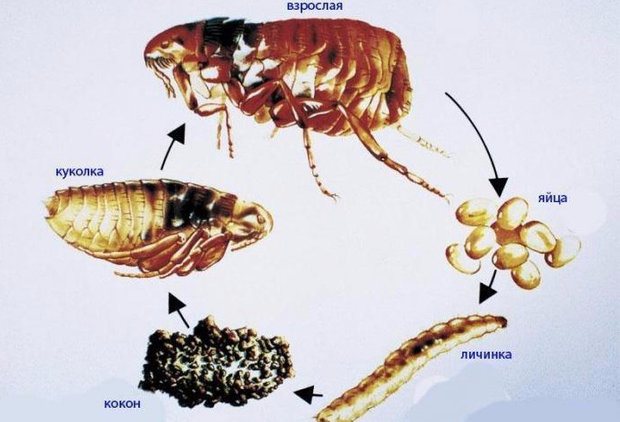

Adults can always be found on a cat, but they do not live on it permanently. After being fed with blood, they jump off the animal. And they do not breed on the owner, but on the pet's bedding or simply in the trash heaps in the yard or in the house. Therefore, larvae cannot be found on cats, they simply are not there.
First signs and symptoms
There are many options for infecting a cat with fleas, and they do not differ from the methods of infesting lice. Symptoms of fleas on a pet are exactly the same as for a lice infestation (see above). There are practically no differences.
Ways to fight
After detecting bloodsuckers on an animal, you must immediately begin to destroy them. There is one specific condition: kittens for up to a month are sanitized from fleas by hand, since conventional medicines can be fatal for them. At the same time, aerosol insecticides are additionally used, with which the animal's resting place is also treated. The usual "Dichlorvos" has proven itself well.
Popular methods of dealing with fleas indoors work well. For this, twigs of bitter wormwood are used: they are simply laid out in the corners. But this method is only good for prevention.
What is a gadfly larva?
After birth, the gadfly larva is rather small. However, under the skin of a mammal, it grows very quickly and after a couple of weeks it can reach a length of 20 mm.
Outwardly, the larva looks like a maggot. Only her body is pear-shaped with several transverse rows of spines resembling hooks. She uses them in order to securely attach to the skin, hair or wool. The main food is blood.
The development cycle of the gadfly larva does not exceed 5 weeks on average. But as an adult, it continues to parasitize the host for another 2-3 months, absorbing nutrients and receiving oxygen through the fistula formed in the epidermis. Then he tries to get out from under the skin to pupate.
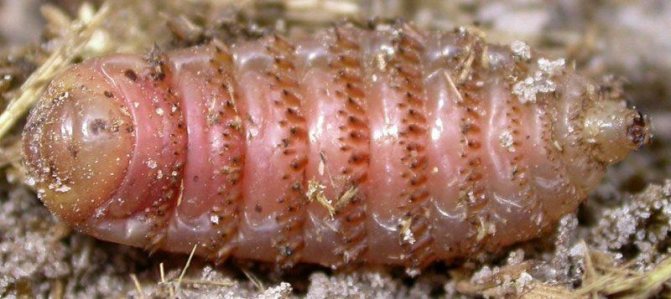

Ticks in a cat: types and methods of elimination
Another type of skin parasite in cats is mites. Veterinarians distinguish between localized and generalized forms of infection, which will be discussed in detail.
Localized form
The localized form of tick lesions includes ixodid and ear mites.
Ixodid ticks - the scourge of animals from spring to late summer. These are small arthropods. Initially small, they swell greatly after a short period of time from the sucked blood. The insect is removed from the skin of an animal (as well as a person) using a special technique.
In the worst case, a cat, after being infected with a tick, can contract one of the specific diseases. In order not to lose your pet, you should still take measures - do tests, carry out prophylaxis on the advice of a doctor. Ear mite infection in cats, it is called otodectosis. In the ears of the animal, as a rule, in both, there is inflammation and irritation, sulfur is released in excess of the norm. The second name of the disease is ear scabies, and it really brings a lot of discomfort to the pet.
Demodecosis
This infection is caused by the demodex mite, which parasitizes the sebaceous glands of the facial skin. The infection spreads acne all over the face, furunculosis and seborrhea. Signs of the disease are:
- acne on the surface of the skin of the face;
- inflammation of the skin around the eyes;
- in some cases, eyelash loss.
Diagnosis of demodicosis is not difficult. Treatment is carried out with the help of special medical devices. In animals, demodicosis is manifested in the baldness of the affected skin areas. Symptoms include itching and irritation of the skin.
What parasites can you get from cats
The risks to humans in case of contact with a cat infected with parasites, we simultaneously touched on in the relevant sections. The summary is:
- Cat lice are not dangerous to humans.
- Fleas are dangerous of any kind, therefore special attention must be paid to the reorganization of the living quarters.
- Ticks are not dangerous, but the ixodid tick, when removed, can jump from animal to person, which should not be forgotten.
The appearance of parasites on the fur, skin, and ears of a cat requires the obligatory intervention of the owner. The sooner the animal is subjected to processing, the easier it is to relieve him of torment. If necessary, the cat or cat must be taken to the veterinarian for examination, testing and prescribing competent treatment.
Cysticercosis
This disease is provoked by the larva of the pork tapeworm, which can choose the subcutaneous layer of a person as its site of localization. The larva can enter the body in different ways: with raw water, with the use of pork meat or lard. Signs of invasion are:
- intermittent itching of low intensity;
- subcutaneous neoplasms in the form of a tumor.
The course of the disease is almost imperceptible to humans, in a sluggish current form.
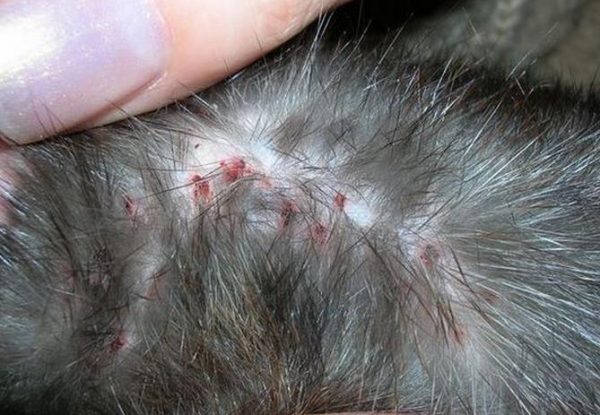

External parasites
The most common parasites that live on cat hair are ticks and fleas. Infection with them occurs through contact with a sick animal. You should be aware that cat fleas live exclusively on cats. Fleas and ticks feed on the pet's blood; during the bite, parasitic saliva remains on the cat's body, causing itching. If these parasitic forms in large numbers infect the kitten's body, it can develop anemia, which is life-threatening due to the large loss of blood.
You can notice parasites in a cat by changing its behavior. The animal often begins to itch and tries to bite off fleas. Pathology can also be detected when examining the epidermis - it is manifested by the spread of small dots on the skin from parasite bites.
These parasites are not transmitted to humans, but they can bite on contact with an infected pet. They can also bite a person, living in carpets and upholstered furniture. Some people develop an allergic reaction to flea bites in the form of redness and an itchy sensation.
Mites
Cats can become infected with otodectosis. Pathology is characterized by the establishment of a tick in the cat's ear. These parasites feed on animal blood and earwax. The disease is diagnosed due to the formation of brown plaque in the area of the auricle, as well as clearly visible bite sites. Pathology can be complicated by otitis media, meningitis and deafness.
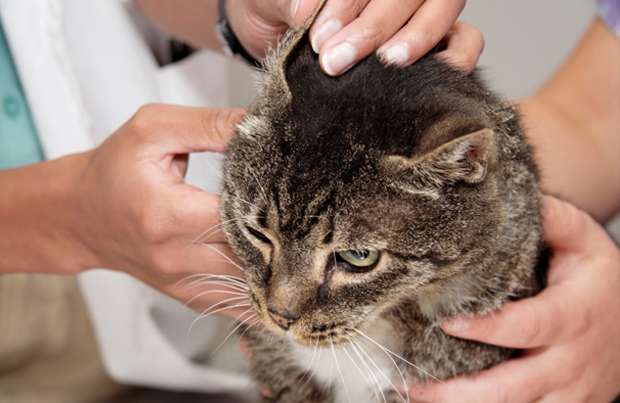

Cats also have subcutaneous mites that cause sarcoptic mange and notoedrosis. These parasitic forms lead to irritation, which provokes the animal to constant scabies. Scratching gradually damages the skin, and hard crusts appear on the site of the papules. With such a disease, hair loss is possible.
Diagnosis of pathology consists in the study of scraping from the affected epidermis, which is carried out in a veterinary laboratory. Treatment is prescribed by a doctor based on the analyzed data of the analysis.
There are also such types of parasites that are able to constantly be on the epidermis of the pet and its fur.If they do not cause the development of pathology, such an existence of parasitic forms is considered the norm. However, with a decrease in immunity, these parasites cause demodicosis. In most cases, this condition does not show symptoms and does not require treatment. With a strong weakening of the pet, the signs of the disease make themselves felt in the form of the appearance of bald patches.


Long-haired breeds can suffer from lice. These parasitic forms make themselves felt with the help of itching. There are also other symptoms of infection:
- strong excitability;
- decreased appetite up to a complete refusal to eat;
- dehydration from not drinking.
If treatment is not carried out in a timely manner, the symptoms will become more pronounced.
What to do
If fleas have been found, the pet should be treated with special agents designed to combat these parasites. You should also treat carpets and upholstered furniture with antiparasitic agents. People do not need treatment since cat fleas do not live on them. If cats do not have parasites, then in the warm season, you should still prevent this pathology by treating the animal's hair with a special spray.


Otodectosis is treated with ear drops and cleaning the ears to remove any dirt. Hosts must treat two ears at once, regardless of whether the second auricle is affected or not. This is due to the fact that mites are able to localize in the inner ear, which is not accessible for visual control.
It is possible to clean the pet's fur from lice by treating the hairline with special means. After 14 days, the treatment should be repeated, since most of the drugs do not act on the lice larvae.
Preventive actions
Cats can have all sorts of parasites. The main task of the cat owner is to carry out preventive measures and timely diagnosis of the disease. Here are some basic precautions against skin disease in cats:
- We must not forget about vaccination against external pests and the use of special means at home. There are a number of effective insecticidal drops available for pet treatment.
- It is important to periodically disinfect the litter and litter box of the cat.
- Do not neglect the strict observance of pet hygiene: cleaning the ears, regularly combing and bathing with a special shampoo.


Preventive actions against internal pests:
- Conducting a preventive anthelmintic course. The procedure is best done in spring or autumn.
- Thorough washing of food products, heat treatment of meat and fish.
- It is necessary to prevent the pet from hunting mice and other rodents.
- Systematic disinfection of the bed, litter box, bowls, carriers and the entire room where the pet most often lives.
- When walking with a cat, it is necessary to use various repellent agents that repel parasites. Do not neglect the use of special collars and dusts, with a similar effect.
All known types of parasites can cause irreparable damage to the health of your pet, therefore, in order to avoid infection, simple preventive measures should be followed.
Internal parasites
What parasites can exist in the internal organs and systems of cats? These helminths are divided into two groups.
- They develop exclusively in the body of the carrier. When a cat gets sick, the risk of human infection increases.
- The life cycle takes place not only in the host's body, but also in the environment. Infection with such helminths can occur not only through contact with a sick person or animal, but also through the use of unwashed fruits or garbage.
The symptomatology of the pathology is influenced by the type of helminth that has struck the body.
Roundworm
These helminths are representatives of roundworms. Kittens most often suffer from this disease. Helminths can be transmitted from sick animals, when using dirty particles from the soil. Roundworms can parasitize in different parts of the feline body - in the stomach, intestines, lungs.
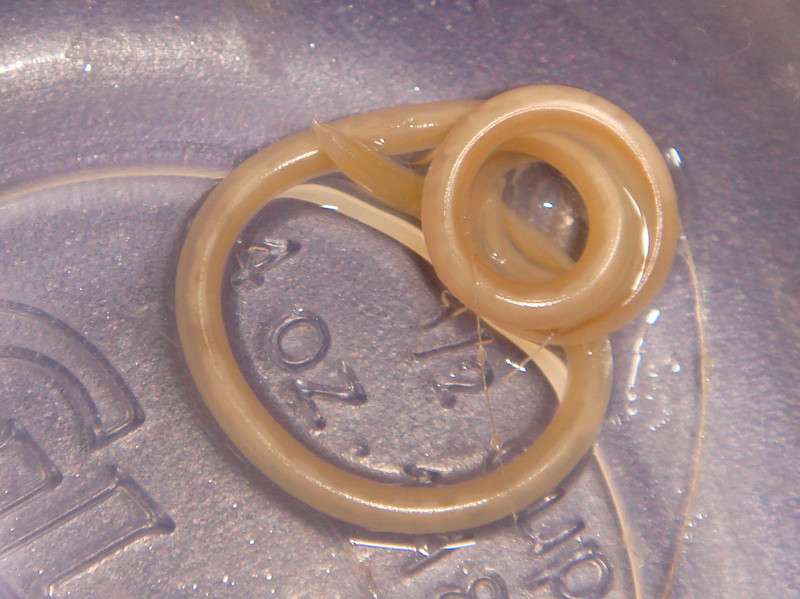

The vital activity of these helminths can provoke the development of:
The larvae can develop into a sexually mature individual, entering the gastrointestinal tract. Only ascaris larvae can be in the lungs - if they do not enter the intestines, capsules form from them. Larvae can also pass into the intestines, causing the cat to cough.
In this case, the parasite enters the oral cavity, and then is swallowed, from where the larvae enter the intestines, where they develop to maturity, lay offspring. From this moment on, a person can easily become infected with ascariasis.
This pathology may not show any symptoms, and in some cases, roundworms can cause:
- intestinal blockage;
- a sharp decrease in weight;
- decreased appetite.
In kittens, ascariasis can cause death. If the treatment of helminths is not done on time, the risk of transmission of the worm to humans increases, as well as severe parasitic damage to the feline body, which can lead to serious complications. If a cat has been diagnosed with ascariasis, children living with the pet in the same house are most likely to be infected with it.
Nematodes
Nematodes are human-transmitted parasites in cats that may not show any symptoms. In the later stages of the pathology, the cat begins to dramatically lose weight. Kittens are in a big risk zone. It is worth considering that the treatment that is carried out against these worms is effective only in relation to sexually mature individuals, but it does not give results in the fight against larvae. Therefore, this pathology can be transmitted from the mother to the kitten during labor.
To diagnose the presence of helminths in a cat, you should conduct a fecal examination in a veterinary clinic. Such an analysis allows you to identify what parasites the pet is infected with, which helps the doctor to prescribe the correct treatment.
After the appointment of treatment, the owner should devote all his ability to caring for the animal in order to exclude re-infection of the pet.
Parasites in cats: symptoms, treatment. What parasites are in cats
Like any other animal, cats are susceptible to various diseases. They can be caused by bacteria, viruses, or trauma. But there are diseases caused by parasites. In cats, they are transmitted through hair, feces, and even through breast milk. The defeat of the simplest parasites threatens primarily weakened, sick, and also elderly animals. Diseases caused by these organisms are also dangerous because many of them can be easily transmitted to humans.
What parasites are in cats
Depending on the place of localization of parasites, they are divided into 2 groups: external, living on the skin and hair of the animal, and external, which live inside the body and affect internal organs. External include insects (fleas, lice, lice, ticks) and arachnids that feed on blood and skin. Of the internal parasites, the most common are roundworms, nematodes, tapeworms. Worm infestation can occur not only in homeless and abandoned animals, but also in a well-groomed pet. For proper and timely treatment, it is important for pet owners to know what parasites are found in cats and how to deal with them.
Dirofilaria
Another common parasite that lives under the skin. This worm is found in animals, but easily passes to humans. The carrier of the infection is a mosquito, which transfers the eggs of the parasite through a bite.Typically, the worms that cause skin infections affect people with weakened immune defenses. A person has:
- hives, itching;
- the appearance of signs of eczema;
- intoxication of the body (fatigue);
- lumps under the skin.
If the worm is localized in the eyeball, it is clearly visible on visual inspection. Also, dirofilaria can choose the heart or lungs as its habitat. In case of eye damage, it can cause glaucoma and loss of vision.
Fleas
These brown blood-sucking insects live almost everywhere. They can even be found in carpets, rugs and upholstered furniture. They are distinguished by the ability to perform huge jumps relative to their size. The habitat of fleas is mainly the fur of the animal.
These are the most common external parasites in cats. Treatment should not be postponed. A large number of fleas can cause severe disease. The bites of these insects lead to severe itching, which makes the cat intensely itch and bite fleas. It is for this symptom that one can suspect the presence of parasites in an animal. Combing and inflammation appear at the site of the bite, and insect waste products can be found on the wool.
Fleas can be carriers of helminths. Therefore, at the first sign of a flea infestation, appropriate measures must be taken. It is imperative that not only the animal itself is processed, but also the entire apartment. The cat must first be bathed. After that, carry out the treatment of the wool with a protivobloshny agent, having previously consulted with a veterinarian on the topic of which drug is best to use.


These pale gray blood-sucking insects also sometimes cause a lot of suffering to pets. These parasites in cats are determined by the restless behavior of animals, the presence of scratching, and upon close examination with the naked eye, both the eggs laid on the wool and the lice themselves are visible. Treatment practically does not differ from the opposite.
Mites
Most often, animals suffer from ear mites. These skin parasites in cats lodge in the ear canal, forming a reddish-brown substance that causes severe itching. Therefore, the animal constantly shakes its head, combing its ears until it bleeds. It is quite easy to make sure that the cause of this behavior is the ear mite. It is enough to wipe the inner surface of the ear with a cotton swab and carefully examine the removed plaque, in which white insects and their reddish discharge are clearly visible through a magnifying glass.
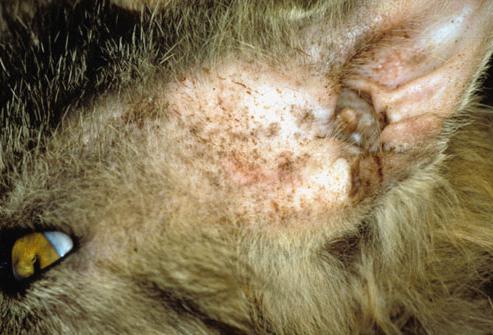

Ear mites cause complications. Their presence can lead to otitis media, deafness, meningitis. Treatment is carried out in the form of treatment with special drugs. First, it is necessary to properly clean the auricle from brown plaque.
Subcutaneous mites are less common. They live in the thickness of the animal's skin, causing irritation and itching. As a result of scratching, crusts are formed, hair falls out in the affected areas. The disease can only be diagnosed in laboratory conditions by analyzing scrapings from the skin of an animal. Based on the research results, treatment is prescribed.
Dracunculiasis
Worms under the skin can be huge - up to a meter. For example, the dracuncul worm. This parasite lives in natural springs in the form of larvae and enters the human body through the use of unboiled water, for example, while swimming. Infection symptoms:
- intolerable itching of internal localization;
- a lump that rises above the skin;
- inflammatory skin processes;
- blisters on the skin.
Worms are easily diagnosed, the healing process takes a long time and discomfort.
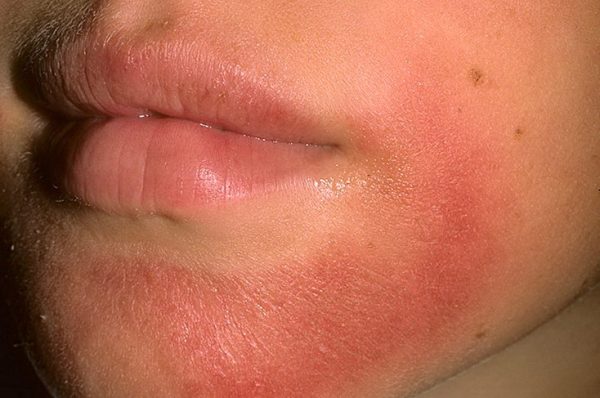

Vlasoedy
Diseases caused by lice are found mainly in long-haired cats. These are small wingless insects with a flattened body that live on the animal's fur.
Anxiety, agitation, biting at the base of the tail, and loss of appetite are caused by these parasites in cats. The symptoms are aggravated if the appropriate treatment is not carried out in time. For this, the wool is treated with insecticidal dust or other special aerosol. After 2 weeks, it is done again, since the preparations have no effect on the larval form.
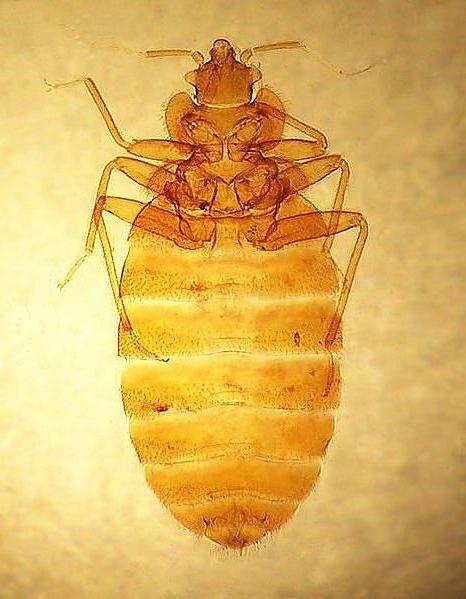

Schistosomiasis
Schistosoma parasitizes the body of animals and humans. Basically, these worms live in natural sources of African and Asian countries. The place of localization of helminths is chosen by the skin and genitourinary organs of a person. The symptoms of the disease are:
- intolerable itching of the skin;
- dermatitis, allergies;
- inflammatory processes in the intestines;
- inflammatory processes of the genitourinary system;
- liver / kidney damage.
Worms are difficult to diagnose and require detailed laboratory tests.
Roundworm
Flat roundworms, which can be up to 12 cm long, are most common in cats. A particularly high percentage of infection in kittens, for which ascariasis is sometimes fatal, causing intestinal blockage. Infection usually occurs through the soil, as a result of contact with sick animals, eating rodents or with mother's milk.
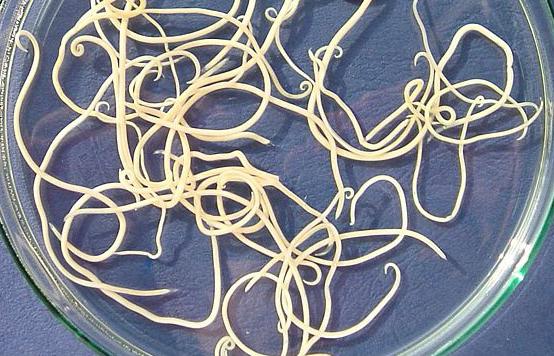

These parasites are usually not immediately detected in cats. Symptoms caused by them are observed in other diseases as well. These include diarrhea, bloating, unhealthy skin, weight loss, severe coughing, and vomiting. The presence of roundworms can be found in the faeces and vomit of the animal. In the absence of treatment, it is possible that they will infect a person. Young children are especially susceptible to this. Thanks to effective anthelmintic drugs, parasites in cats are eliminated in a maximum of 5 days.
Nematodes
This type of internal parasite is less common than roundworms, but can lead to equally serious health problems. Symptoms at the initial stage of infection are practically absent, which makes it difficult to establish a timely diagnosis. The manifestations of the advanced form of the disease are diarrhea, blood in the feces, weight loss of the animal. Nematodes are transmitted through infected animals, infectious eggs and larvae entering the intestines. A pregnant cat infected with hookworms can transmit the infection to future kittens.
It is necessary to carry out mandatory prophylactic treatment of the animal with anthelmintic drugs, since parasites in cats, transmitted to humans through normal contact, can cause serious diseases, especially in children.
Prevention of infection with helminthiasis
I have been detecting and treating parasites for many years. I can say with confidence that almost everyone is infected with parasites. It's just that most of them are extremely difficult to detect. They can be anywhere - in the blood, intestines, lungs, heart, brain. Parasites literally devour you from the inside, at the same time poisoning the body. As a result, numerous health problems appear, shortening life by 15-25 years.
The main mistake is procrastination! The sooner you start removing parasites, the better. If we talk about drugs, then everything is problematic. To date, there is only one truly effective antiparasitic complex, and that is Toximin. It destroys and sweeps out all known parasites from the body - from the brain and heart to the liver and intestines. None of the drugs existing today are capable of this.
Within the framework of the Federal program, upon filing an application until October 12. (inclusive) each resident of the Russian Federation and the CIS can receive one pack of Toximin IS FREE!
With caution, it is quite possible to prevent subcutaneous worms from entering the body.
- undergo annual medical examinations;
- consult a doctor for various kinds of ailments;
- wash your hands thoroughly after going to public places and tactile contact with strangers and stray animals;
- boil raw water, and do not drink it from natural sources;
- do not swim in stagnant bodies of water, especially in hot countries;
- to fight blood-sucking insects using repellents and protective devices;
- carry out routine and general cleaning of the house, and maintain order.
When traveling to epidemically dangerous states, you need to observe safety measures, and be sure to find out all the information on how to protect yourself on the trip.
It is necessary to improve immunity by leading a healthy lifestyle, eating well, hardening and taking vitamin complexes several times a year.
Fighting subcutaneous parasites takes patience and effort. If all the doctor's prescriptions are followed, the person will fully recover.
Video about the disease of scabies and methods of its treatment:


Today there are pets in almost every apartment or house. And more often than others, cats are brought up in city apartments. However, any animal with inadequate care can become a carrier of various types of helminths. Moreover, many of them are transmitted to humans. Adherence to personal hygiene and regular deworming of the animal will help to avoid such an unpleasant situation.


